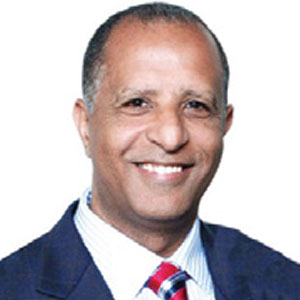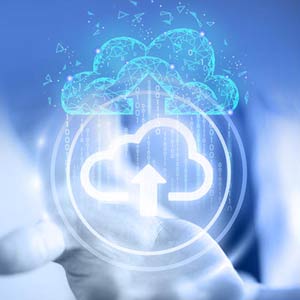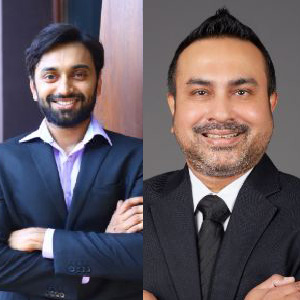THANK YOU FOR SUBSCRIBING

Digital Asset Management and IoT the Innovation Path from
Medhat Mahmoud, Sr. Director, Technology & Strategy, IoT Solutions, Huawei Technologies


Medhat Mahmoud, Sr. Director, Technology & Strategy, IoT Solutions, Huawei Technologies
Digital Asset Management has been known for decades and it refers to the assets that exist in a digital format. In essence, it is a set of databases and infrastructure to collect, store, and process the digital representation of assets allowing users to search, identify and read assets data.
The type and complexity of a digital assets range from a simple digital document, audio, image, or video file to any digital file representing physical devices such as sensors or machines. It also represents assets from a wide range of industries such as utilities, factories, transportation, buildings, consumer, wearable devices and vehicles, covering almost all things in our life.
The number of digital assets types and classifications are exponentially increasing with rising technology advancement due to the digital economy era.
So, what’s new in this definition?
The continuous evolution of new technologies, high speed wireless infrastructure, industrial and global social development are changing the way we currently do business, interact with each other and exchange values, either as individuals, organizations or even governments. Advanced implementations such as the shared economy, connected world, cloud services, digital twins, Internet of things, artificial intelligence, big data, connected society, machine learning are all together forming a new era of an industrial and digital economic revolution that is changing the future outlook of digital asset management .
The majority of digital assets have a set of monetary value. Since digital assets represent a digitization of the elements owned by a user or an entity, assets value usually increases according to their usage. So, in general, the value gained from digital assets can be open for growth, depending on how far it can be re-used and shared to serve other entities. In other words, it can shift from a static, limited value to a shared, dynamic, limitless value.
Internet of Things (IoT) has been emerging very strongly in the last few years as the largest global technology trend leading the changes for the connected ecosystem, with connected digital assets playing a major role in it.
The IoT is leading the transformation where, for the first time, we will start seeing more, new connected assets than not, where assets data are all reported, and possibly, shared in real-time regardless of the geographic location and type of the assets.
The digital assets will no longer be just “stored static digits” belonging to one entity, but is becoming a “stored dynamic value” with potential to generate more value to many, even unrelated, entities.
The digital assets will no longer be just “stored static digits” belonging to one entity, but is becoming a “stored dynamic value” with potential to generate more value to many even unrelated, entities
In the utilities management sector, energy flows can be controlled with a real-time understanding of the state of the grid assets: from power stations distribution to smart meters. Not only they can optimize the energy based on the actual capacities of their assets, but, as a step further, they can apply certain logic to draw a detailed consumption pattern that can better optimize and distribute energy more efficiently. A more sophisticated approach, known as predictive maintenance, is to build intelligent algorithms to detect the possibility of power failure or peak before they occur, preventing unplanned downtime, saving millions of dollars, productivity loss or other economic and social impact.
Another example, in the “connected vehicle” industry, is where a vehicle is equipped with a comprehensive set of sensors that are constantly sending a wealth of real-time information such as traffic data, road conditions, pedestrian flow, passenger status, weather data, or pollution levels. Although this set of digital assets can be owned by the vehicle owner or one service provider, it can now be a source of valuable information to be profiled, stored centrally and dynamically shared to provide benefits to an extended set of other entities (e.g., insurance companies and other service providers) enabling new services, such as safety, marketing, local business, traffic control, weather forecasting, and emergency services.
In the smart cities context, IoT’s ability to capture real-time sensor data on everything from energy consumption to problems with the water or sewage system, public transportation, streets, safety and traffic flow, can all be connected to the Digital Asset Management system and enable sound decisions to be made, there and then, as well as in the longer term, sharing with other entities to benefit from its value.
Furthermore, when the digital assets data are managed through advanced technologies such as Artificial Intelligence and deep learning, different patterns can be detected and more valuable information extracted that can’t otherwise be observed or used.
The most important outcome of this advancement is the enablement of a collaborative culture for innovation that has become indispensable for the value creation of the future, both within the business’s own boundaries and beyond, with partners, governments, institutions, customers and communities. More collaboration to bridge the gaps between developing and developed worlds will become a necessity for the advancement of societies.
Imagine, with shared digital assets that represent farming, agriculture, environmental or anonymous individual health information collected globally, from developed and developing countries alike, the extracted values for humanity to improve productivity, health, and to predict natural disasters and epidemics can be enormous. In addition to generating business values to the companies working on those data, new business models that pave the path for open innovation will evolve.
However, significant global efforts and alliances need to lead the creation of such a collaborative environment, to bring different industries, technology leaders, standardization bodies, institutions, and governments together. These efforts are most likely to succeed if driven in an unbiased and not-for-profit atmosphere, taking a global approach to bridge the gaps and accelerating the adoption of the technology and interoperability in a collaborative eco-system environment. The Industrial Internet Consortium IIC represents a leading valid model to follow.
Digital assets, embedded in IoT, are just the beginning of the digital ecosystem which is developing rapidly worldwide. A collaborative and technology innovation culture is becoming the path from just “digits” to a real global “value”.












